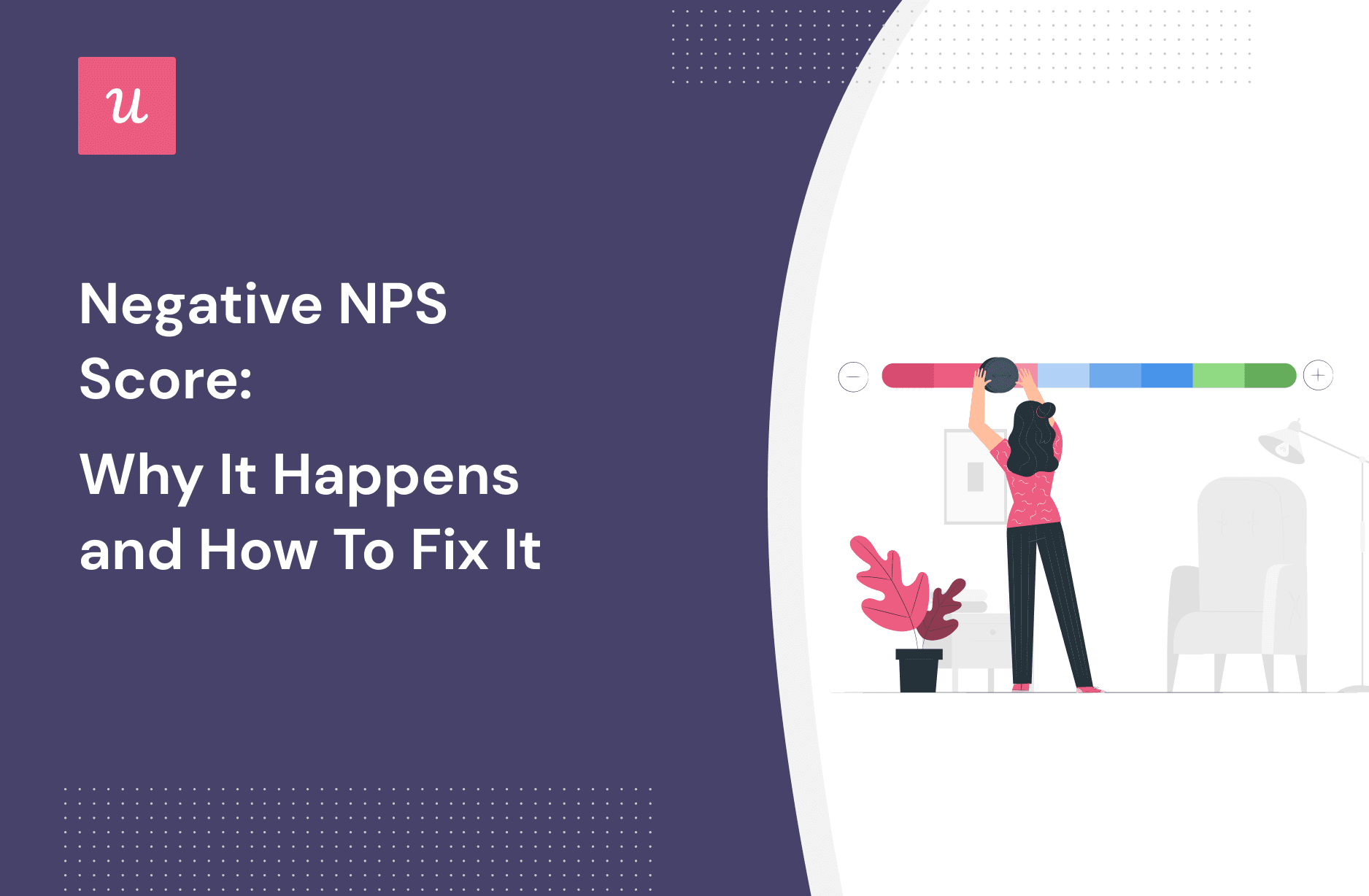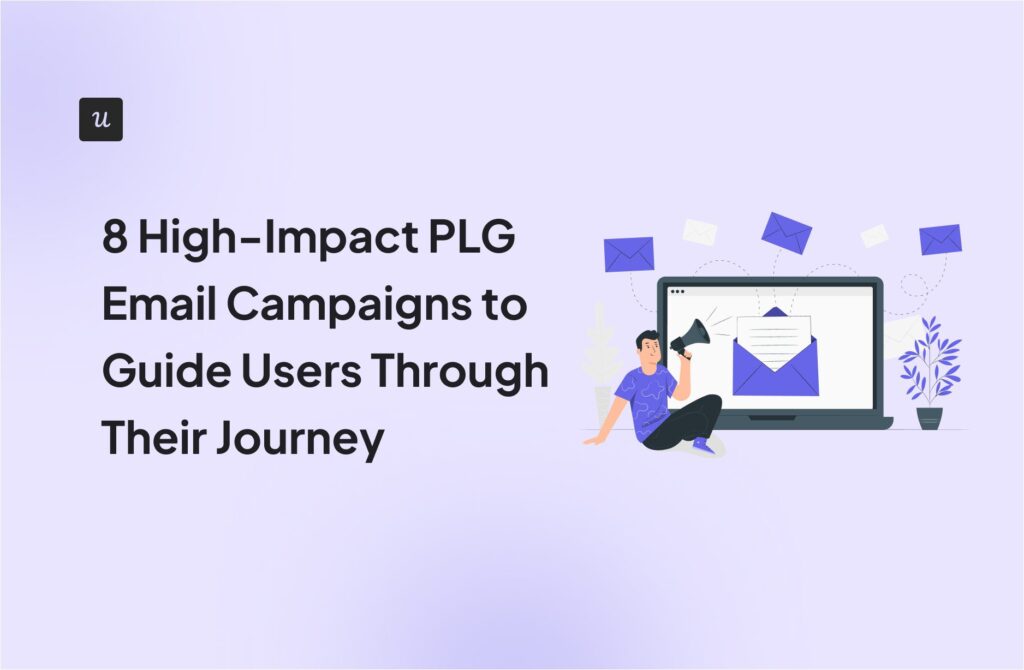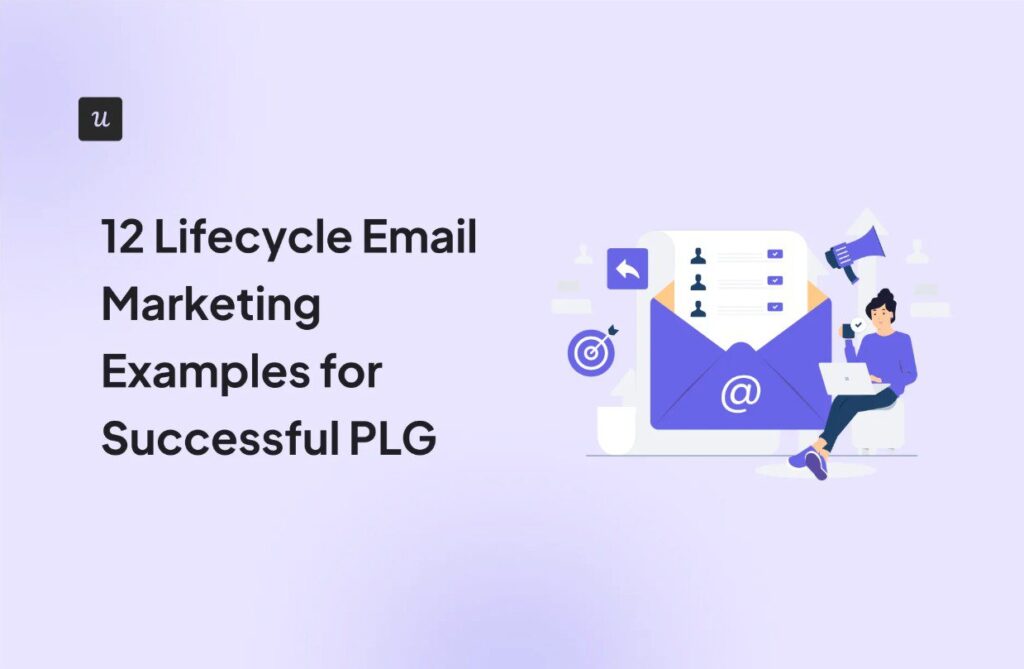
If you’ve been conducting user sentiment surveys recently, there’s a good chance you faced a negative NPS score.
Or else, why would you be here?
In this article, we go over why you got a negative NPS and what you can do to prevent it from stunting your product growth.
Get The Insights!
The fastest way to learn about Product Growth, Management & Trends.
What is the Net Promoter Score (NPS)?
The Net Promoter Score (NPS) is a metric that measures the likelihood of a customer recommending your product or service to others.
Net promoter score surveys ask users how likely they are to recommend your product or service to others on a scale from 1 to 10. Where 0 means “Not Likely” and 10 means “Extremely Likely.”

How to calculate net promoter score?
Now, if you had a negative net promoter score, are you sure you’re measuring it correctly?
You see, based on their survey answers, customers are divided into three groups:
- Detractors (0-6). Unsatisfied and unhappy customers who spread negative word of mouth.
- Passives (6-8). Users who are ambivalent and neutral about your company. They are not dissatisfied, but if a competitor with a slightly better offer comes along, you may lose them.
- Promoters (9-10). Your “power users” and loyal customers. They refer others to your company and drive positive word-of-mouth.
Then, NPS is calculated by subtracting the percentage of detractors from the percentage of promoters—we completely ignore the passives for the calculation.
For example, if 43% of your respondents answered with 9 or 10, and 18% answered with 6 or below. Your NPS is then 43 minus 18, which equals 25.

Is it possible for a company to have a negative NPS score?
Yes, since the NPS score can range from -100 to +100. It’s possible to have a negative score.
For example, if you have 100 responses, 55 scores 0-6 (detractors), 30 scores 7-8 (passives), and 15 scores 9-10 (promoters), then your NPS score will be -40.
When it happens, it simply means your company has more detractors than promoters, and you need to work on building more customer loyalty.
What are the reasons behind a negative NPS score in SaaS?
Negative net promoter scores generally mean that users are not finding the value of your product. This can happen for multiple reasons:
Bad product-customer fit
If customers are not satisfied with your product, you might be attracting the wrong audience.
For example, if your marketing campaigns are over-promising what your product can do or claiming that it’s built for anyone in your niche, it will likely bring more bad-fit customers than good-fit customers.
There’s also a chance that you haven’t done enough customer research yet and are still clueless about your ideal customer and how to reach them. In this case, you must urgently conduct customer interviews and advanced segmentation to find out.
The lack of in app-guidance
Your product might be easy to use for you. But not for your customers.
Users can’t predict what sequence of tasks will lead them to success unless you tell them—which is why you need to guide them through the customer journey continuously.
For this, implementing in-app help such as prompts, messages, tooltips, checklists, and walkthroughs can increase the likelihood of them becoming promoters as they succeed with your app.
Poor customer service
Terrible customer service can ruin a great product.
Long wait times, generic answers, constant back-and-forth emails to solve small problems, etc.
These days, users expect to find answers quickly inside your product. And if you keep offering outdated call center systems, you’ll leave a lot to be desired and generate more detractors than you’d wish.
What is a good NPS score?
Although industry benchmarks vary greatly, any positive result is already a good NPS.
More than 30 is great; if you hit above 70, you’re at the top.
Consider that the average NPS score in SaaS is 41 if you want to be competitive. You can also see the benchmark for other industries in this image:

How to understand the root causes of a negative NPS score?
If you truly got a negative NPS result, what can you do to start taking action?
The short answer: doing research.
The long answer is following these three steps:
Ask follow-up questions to detractors
First off, user sentiment isn’t just a number on a page. Your NPS survey should be an opportunity to engage and strengthen customer relationships.
And for this, you can add follow-up questions depending on your user’s answers. This way, you can ask your detractors what made them choose their score and get a deeper insight into what you can do to improve.
(It also allows you to ask promoters what’s working for them, so you can keep doing it!)
This image explains it better:

Tag qualitative responses and identify recurring patterns
With customer success software, you can tag NPS responses to identify recurring themes that correlate with low scores.
This way, you can understand what makes detractors, detractors.
For example, this dashboard shows that 100% of detractors listed “missing feature” behind their rating, which means that you can casually reach out to them and ask about features they’d like to see so you can implement them (and eventually convert them into promoters).

Cross-reference NPS score with product usage analytics
Another way to find the root cause of your negative score is to segment your detractors and look into their product usage patterns.
Maybe a user hasn’t discovered a key feature of your product because they skipped the onboarding checklist (thus, you could send them an email to encourage them to use it). Or perhaps it’s not one but an entire group of active users who are ignoring a key feature (then you could trigger an in-app tooltip on them and improve your onboarding process for future customers).
The point is to segment your detractors and correlate them with different metrics that can give you this type of insight and act accordingly.

7 strategies to improve your NPS score
Once you’ve found the root causes of your negative score, what can you do to improve it?
Here are our seven strategies:
Collect NPS data accurately
Before relying on your NPS scores, you must ensure the data you collect is accurate.
For this, you should segment users based on product usage, in-app behavior, or stage in the journey and trigger the NPS survey to those who are worth asking.
For example, asking inactive users to rate your app doesn’t make sense, as they are still discovering the product. Plus, they may not feel ready to recommend it even if their experience has been positive.
Or if you have users who already took the survey and you keep asking them every week, they might feel annoyed and give you a lower rate.

Always respond to negative feedback
Your lowest-scoring detractors can damage your reputation on 3rd party platforms. Even if you don’t get them back, you can defuse the situation if you own responsibility and make people know that their opinion matters.
Most importantly, you’ll stop them from spreading negative word of mouth and leaving negative reviews.
It’s also a good opportunity to learn from them and make improvements, so other customers don’t find themselves in the same boat.
Reach out to detractors personally and offer help
There’s a chance to convert the highest-scoring detractors into happy customers.
If they haven’t explicitly stated why they were unhappy, you can send them a personalized message to learn more about their negative experience, address it, and fix the situation.
If you’re lucky, you can change their perception of your brand and eventually improve your relationship with them.

Enhance customer service experience with self-support options
We said poor customer service is one of the three reasons you might get negative NPS.
To avoid this issue, create a self-serve knowledge base to empower users to support themselves, so they don’t have to rely on customer support for any minor problem or leave your app to find answers.
With proactive support, you can prevent problems before they happen, removing the friction and improving the customer satisfaction—thus reducing the chance of generating detractors.

Provide continuous in-app guidance and education
As mentioned, a lack of in-app guidance might stunt your chances of generating promoters.
Simply, they won’t be able to find success with your product if you don’t show them how.
Hence you must enhance the product experience with in-app messages and contextual help to handhold users through their journey, including UI patterns such as tooltips, modals, checklists, and walkthroughs.

Run regular NPS checks to evaluate progress
One common mistake most companies make is sending too many surveys thinking it will help them collect more customer feedback. As a result, users feel bombarded and often end up ignoring your surveys completely.
But, NPS surveys are only valuable when you track their development over time, so you can regularly check the improvements in your customer experience and double down on what works (and fix emerging issues before they expand).
To avoid overwhelming users, we recommend setting the frequency to every 3-6 months. Every user sentiment tool should be able to do it.

Measure and improve your NPS score with Userpilot
You can run NPS surveys yourself, but we recommend using a specialized tool for convenience if you don’t know how to code.
With Userpilot, you can create and customize NPS surveys code-free and even include follow-up questions, as we discussed earlier:

You can also visualize your data on a simple dashboard so you can track your progress over time and make improvements on the go.

Additionally, Userpilot lets you segment users based on NPS responses to create personalized flows, spotlights, and feature tags—improving the customer experience (and increasing your chances of generating promoters).

Wrapping up
Although negative NPS is not a good sign, it’s also not the end of the world.
We just covered what you can do to find its cause and improve your NPS over time.
So if you want to get started with tracking your NPS surveys, why not get a Userpilot Demo and see how you can create an effective net promoter system code-free?




